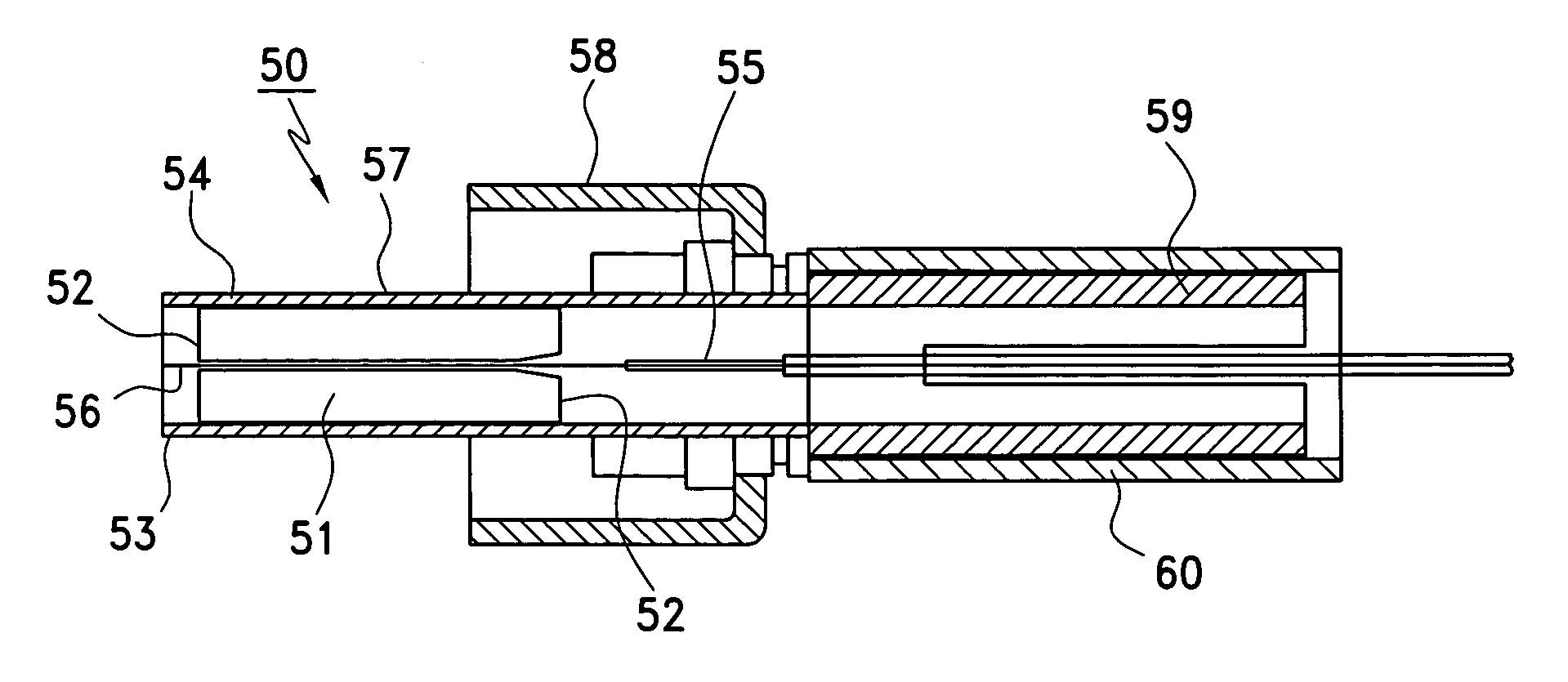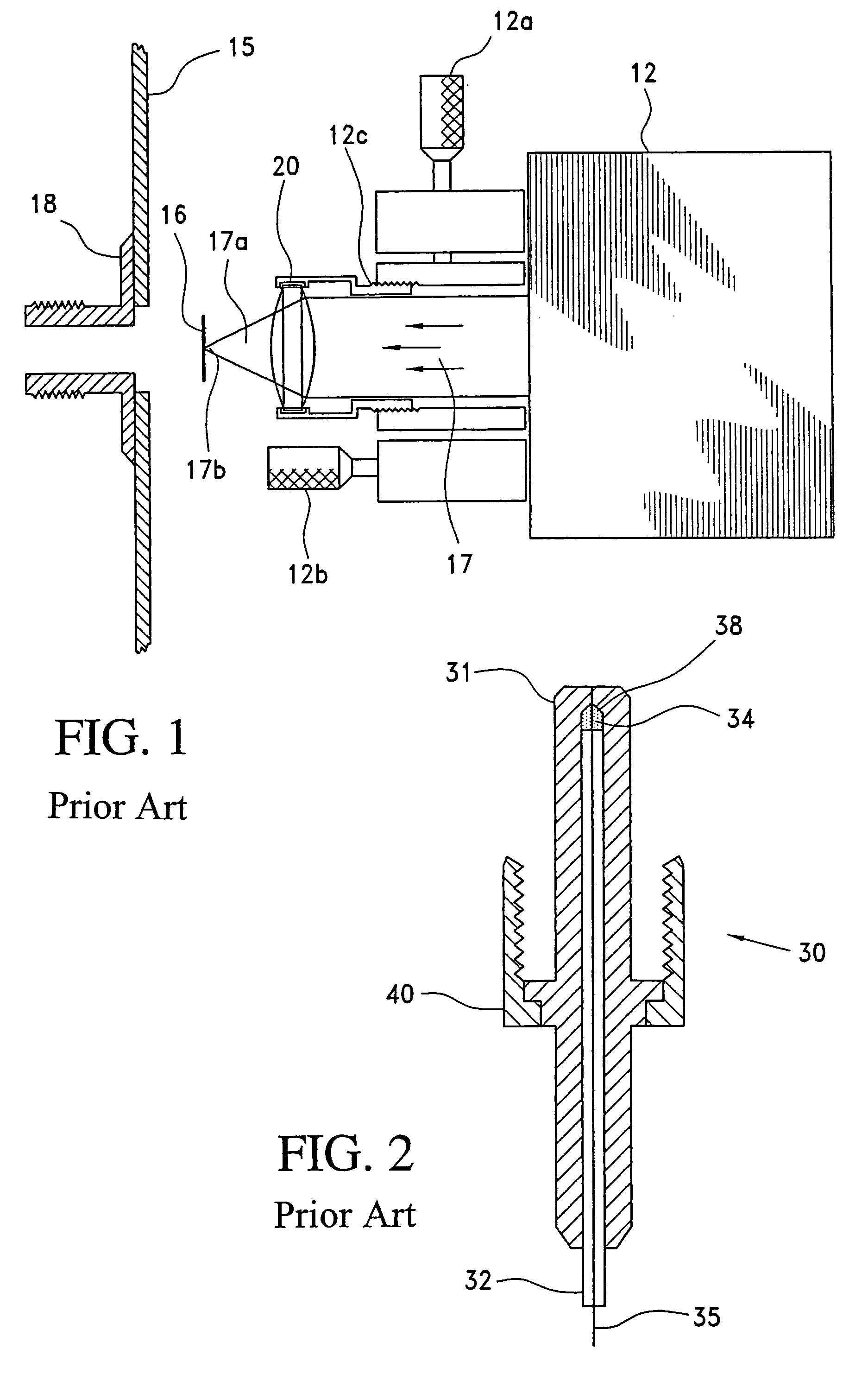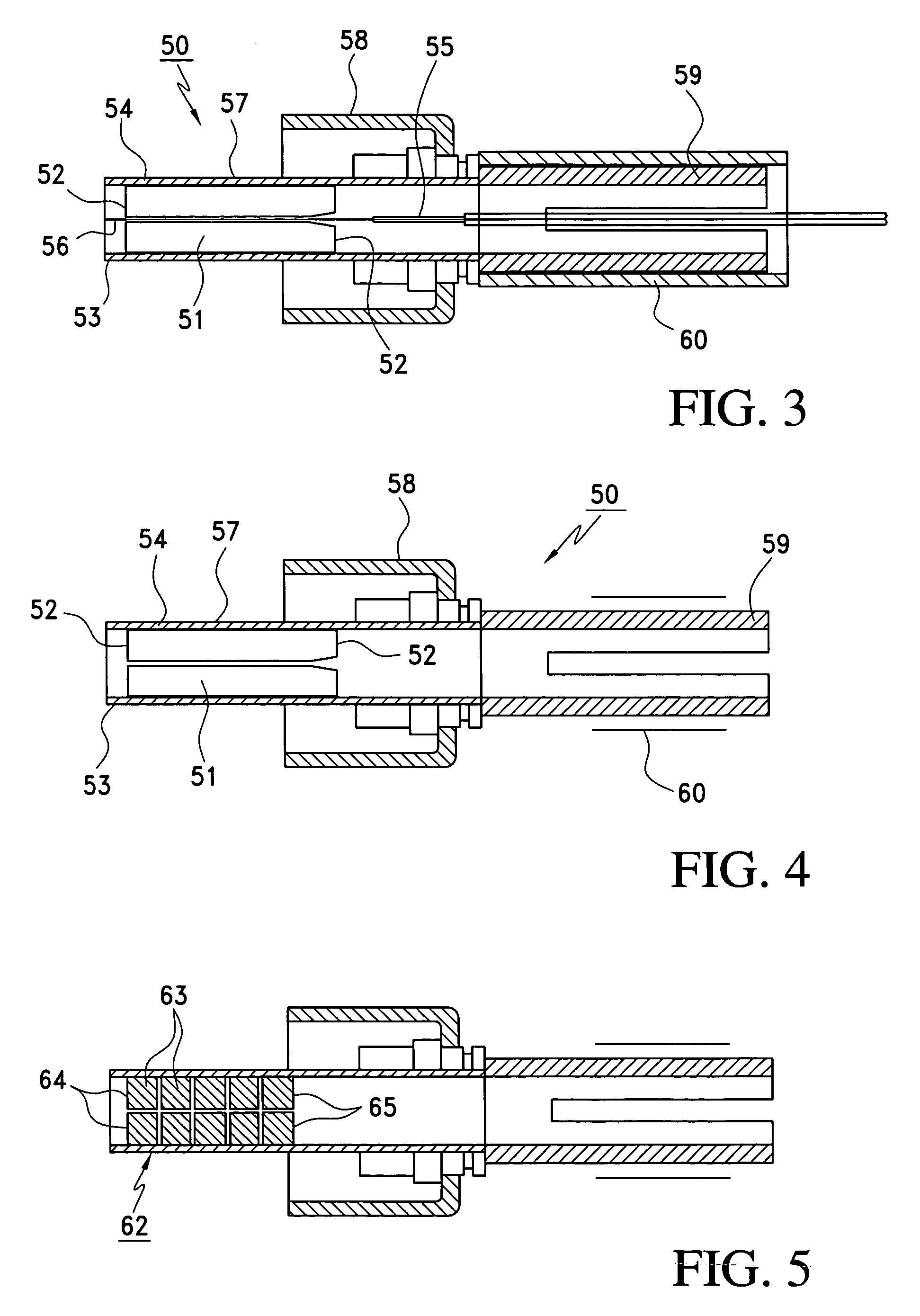Apparatus and method for diffusing laser energy that fails to couple into small core fibers, and for reducing coupling to the cladding of the fiber
a technology of laser energy and diffusing method, which is applied in the field of apparatus and method for diffusing laser energy that fails to couple into small core fibers, and reduces coupling to the cladding of the fiber, can solve the problems of radiant energy problem, more difficult to focus laser energy into the core, and explosively form a plume, so as to reduce the coupling of higher-order modes
- Summary
- Abstract
- Description
- Claims
- Application Information
AI Technical Summary
Benefits of technology
Problems solved by technology
Method used
Image
Examples
Embodiment Construction
[0043]FIGS. 3 and 4 illustrate a connector constructed in accordance with the principles of a preferred embodiment of the invention, for coupling to a coupling connector corresponding to coupling connector 18 illustrated in FIG. 1. It will of course be appreciated by those skilled in the art that the principles of the invention may be applied to laser apparatus other than the apparatus illustrated in FIG. 1, and that the invention is not intended to be limited to a particular laser source or connector coupling arrangement.
[0044]Turning to FIGS. 3 and 4, connector 50 is identical in size to connector 30 of FIG. 2, but differs in that the connector includes a transparent cylindrical alignment ferrule 51 having diffusers 52 at opposite ends. The diffusers are in the form of roughened surfaces of the ferrule 51, and in particular in the form of surfaces having a rough polish, although roughening may of course be achieved by means other than polishing, such as chemical or laser etching, ...
PUM
 Login to View More
Login to View More Abstract
Description
Claims
Application Information
 Login to View More
Login to View More - R&D
- Intellectual Property
- Life Sciences
- Materials
- Tech Scout
- Unparalleled Data Quality
- Higher Quality Content
- 60% Fewer Hallucinations
Browse by: Latest US Patents, China's latest patents, Technical Efficacy Thesaurus, Application Domain, Technology Topic, Popular Technical Reports.
© 2025 PatSnap. All rights reserved.Legal|Privacy policy|Modern Slavery Act Transparency Statement|Sitemap|About US| Contact US: help@patsnap.com



